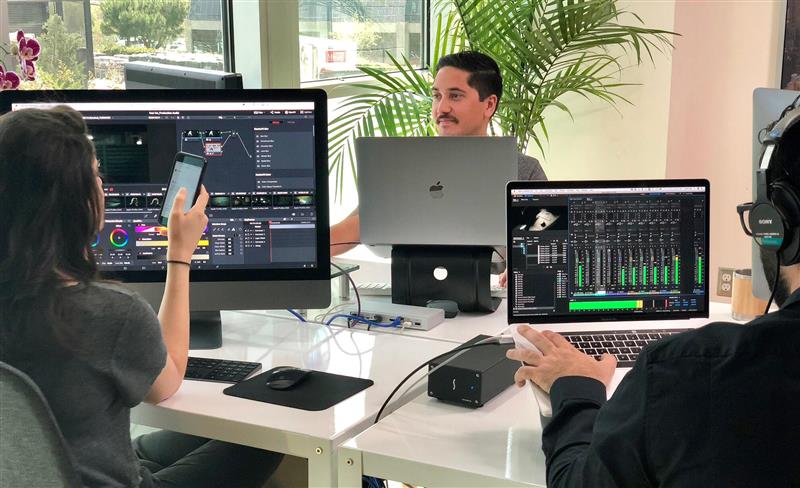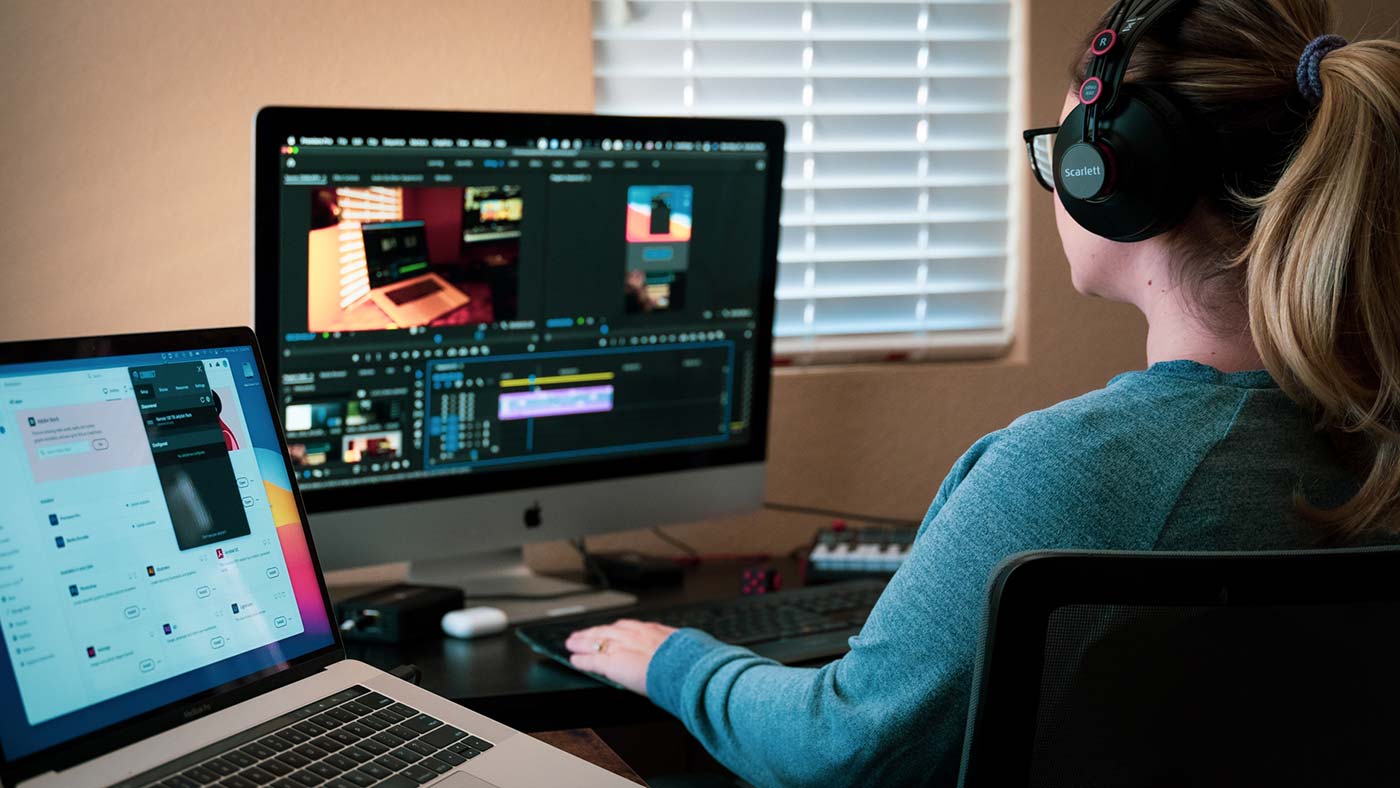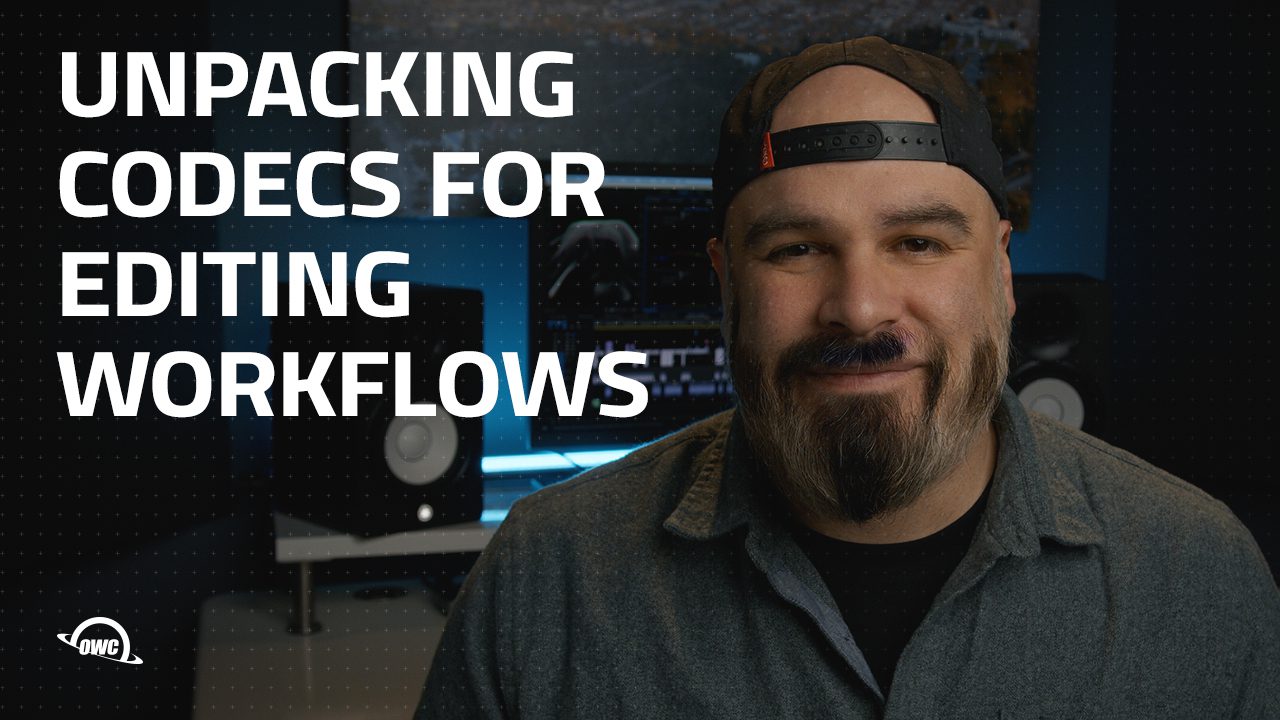
Filmmaking is a collaboration at its core and creators at every level must be able to work within a team to complete their projects. Having clearly defined roles in your post production team is the first step to building trust and efficiency in your workflow. Without proper communication and seamless hand off from team members production schedules quickly spiral out of control.
You and your team have to tackle problems such as workflow and equipment early on in production. Equipment such as powerful workstations and shared storage are tools that can speed up your process and allow more time for creativity and collaboration. However, a workflow that clearly dictates how you use those tools is even more important than having the latest processor or graphics card.
Networked attached storage like OWC’s Jellyfish can make the handoff between departments painless and accelerates the process, allowing more time for collaboration and ideation. Efficiency is the name of the game so let’s take a look at a few common roles in post production teams today.
Post Production Supervisor
- Oversees the entirety of the post-production process
- Makes the producers aware of any and all financial and creative considerations before the work begins.
- Determines the best workflow including dailies, color, sound, and final asset delivery
- Hires and manages the majority of the post production team
- Schedules colour sessions, audio playback, and ADR with talent
- Coordinating, directing and/or supervising APEs and Post PAs Assistant Picture Editor(s)
- Under appreciated. Handles absolutely everything.
First Assistant Picture Editor
- Runs the day-to-day of the cutting room, leaving the editor free to concentrate on editing the film
- Communicates with other departments, like production, camera and sound
- Checks camera sheets when the rushes arrive and notes any technical problems
- Can sometimes be asked by the editor to do an assembly cut
Assistant Picture Editor(s)
- Maintains the system of organization (e.g. continuity, marked script, camera and sound reports, Dailies tapes, updating scripts, and any other editorial paperwork), established by the Editor(s) or First Assistant Editor(s)
- Sources temp sound effects or stock footage
- Syncs and marks ins and outs on takes
- Assists in the packing and shipping of elements and the shipping of dailies/cuts to Producers in any format
Picture Editor
- The Editor obtains dailies and begin assembling the overall arc and beats of the story to create a rough cut
- Identifies any missing coverage to the production such as close ups, inserts, establishers. If an editor is cutting during filming most of the time the crew is able to add these elements to their schedules on later days.
- Responsible for ensuring that the overall tone of the film is in line with the vision of the Director.
- With Director, refines a Director’s Cut which is then shown to the Producers approval before achieving Picture Lock.
VFX Editor
- Basically is a specialised assistant editor that handles visual effects shot turnovers to the VFX Vendor or in house artists.
- Usually works hand in hand with the picture editing team as well as the VFX Supervisor and/or VFX Producer to identify and communicate all VFX shots
- Generates temp VFX to help communicate story points and for VFX artists to use as reference for timing and placement of elements.
- Cuts in approved versions of VFX shots
Online Editor
- Receives an EDL and reference cut from the assistant editors on the production
- Conforms the original camera media to the offline reference cut and prepares the cut for the colorist to begin their work
- Sends a copy of the online cut back to the assistant editor to approve
Colorist
- Responsible for the final colour graded master. This day and age distributors usually require an SDR and HDR deliverable. The colorist oversees the generation of both of these elements
- Creates visual continuity and progression across the entire film
- Crafts the look and feel of the film with the director, cinematographer, and producers
Sound Editor(s)
- Once the picture is locked, attends a spotting session with the Director to discuss the tone and feel of the sound.
- Cuts in all sound effects usually from an existing library or recorded in the field
- Identifies the right sound effects, foley, ADR and dialogue
- With the Director, identifies and conceptualizes moments of naturalistic or stylized sound design
- Identifies lines of dialogue where ADR (Automated Dialogue Replacement) isrequired for clarity or different intonation for performance.
Foley Artists
- Named after Jack Foley who created sound effects with tools he had around him during radio broadcasts
- Foley focuses on sounds like movement, footsteps and interaction with specific props.
- Recreates sounds that are not able to be captured by production on the day of filming.
- SoundWorks Collection: Gary Hecker – Veteran Foley Artist
Sound Mixer
- The mixer takes all the tracks from the sound editor(s) and balances them so that the dialogue, effects, music, and foley exist in a unified sonic world.
- Identifies creative opportunities for mixing in a surround sound environment like Dolby Atmos.
- Works closely with the Sound Editor(s) and the director to achieve a sonic consistency throughout the film.
These are only some of the common roles on the post production team. You can see how vital an efficient handoff of assets is when so many team members are involved. The picture team is passing timelines and projects back and forth, the sound team is combining their work together for the mixers, and the colorist and online editor are able to pick everything up and take the project across the finish line. The Jellyfish is an NAS solution built specifically for filmmaking teams who need a high degree of efficiency in passing high volumes of large assets back and forth.
In this industry it’s not only important to have good oral and/or written skills to work efficiently with your team, it’s important to have the right technology that supports your endeavors. You can get the Jellyfish in mobile, rack, and tower configurations, and with up to 432 TB of storage space and up to 4200MB/s of aggregate read speed, a Jellyfish is an incredibly efficient way for post-production teams to juggle 4K, 6K, and even 8K projects,
Something as basic as having access to the same material and project files takes the hassle of passing off hard drives, keeping track of versions, or potentially losing files in the process. All of that is time and money saved that can go back into your projects. Having your team on network attached storage enables you to accelerate your creative process. Whether that’s a whole team like the one above or a two person collaboration.
Teamwork makes the dream work.
Conner Stirling has fulfilled the roles of VFX Editor, On Set VFX Supervisor, and VFX Production Manager on shows like Vikings, Mrs. America, SEE, and The Expanse. Working at companies like IMAX, Technicolor, and Mr. X exposed him to workflows and pipelines ranging from high budget features to intimate indie dramas. A dedicated professional in the post production landscape, he is constantly driven by his passion for story, history, and the experience of great cinema.









